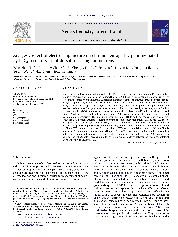摘要
Adenosine 5'-triphosphate disodium (ATP) gated P2X receptors, especially the subtype P2X(3), play a key role in transmission of pain signals in neuropathic pain, ATP has been documented to play a significant role in the progression of pain signals, suggesting that control of these pathways through electroacupuncture (EA) is potentially an effective treatment for chronic neuropathic pain. EA has been accepted to effectively manage chronic pain by applying the stimulating current to acupoints through acupuncture needles. To determine the significance of EA on neuropathic pain mediated by P2X(3) receptors in the dorsal root ganglion (DRG) neurons, mechanical withdrawal threshold (MWT) and thermal withdrawal latency (TWL) were recorded, and the expression of P2X(3) receptors in the DRG neurons was assessed by immunohistochemistry (IHC) and in situ hybridization (ISH). In addition, the currents which were evoked in DRG neurons isolated from rats following chronic constriction injury (CCI) by the P2X(3) receptors agonists i.e. ATP and alpha,beta-methylen-ATP (alpha,beta-meATP) were examined through the experimental use of whole cell patch clamp recording. The present study demonstrates that EA treatment can increase the MWT and TWL values and decrease the expression of P2X(3) receptors in DRG neurons in CCI rats. Simultaneously, EA treatment attenuates the ATP and alpha,beta-meATP evoked currents. EA may be expected to induce an apparent induce analgesic effect by decreasing expression and inhibiting P2X(3) receptors in DRG neurons of CCI rats. There is a similar effect on analgesic effect between rats with contralateral EA and those with ipsilateral EA.
- 出版日期2012-3
- 单位温州医科大学
